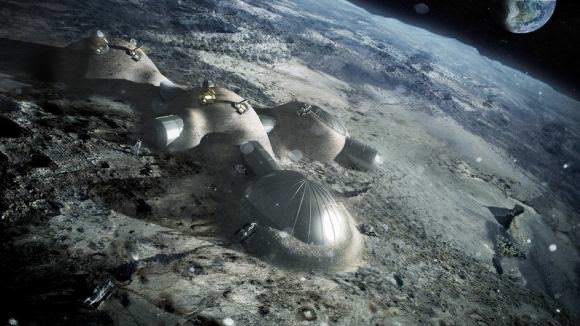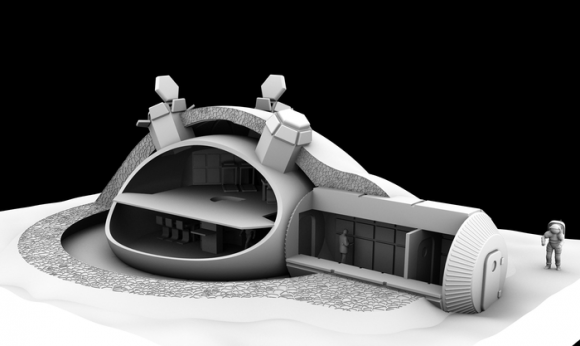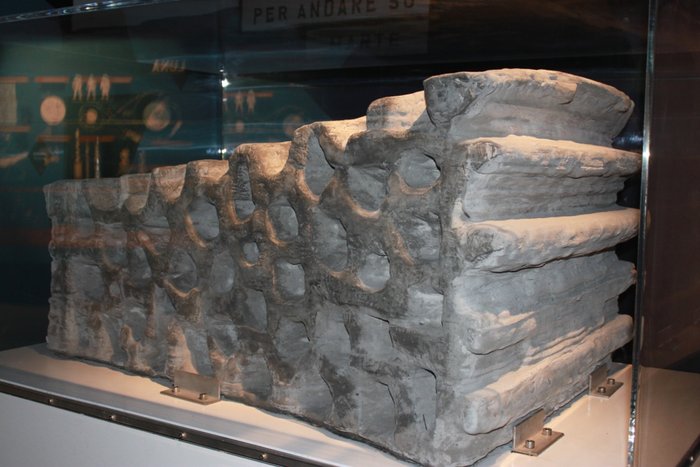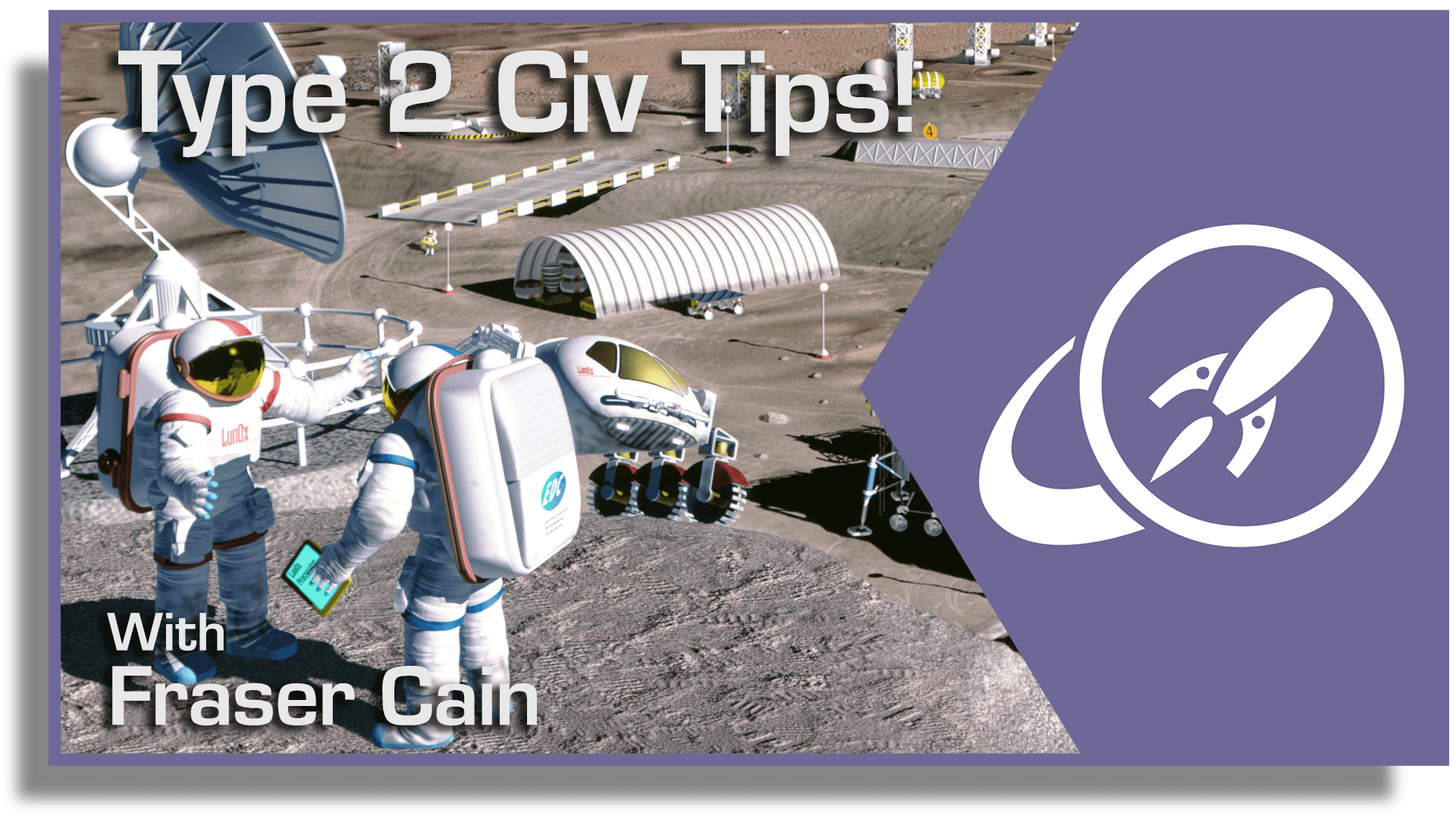In the coming decades, many space agencies hope to conduct crewed missions to the Moon and even establish outposts there. In fact, between NASA, the European Space Agency (ESA), Roscosmos, and the Indian and Chinese space agencies, there are no shortages of plans to construct lunar bases and settlements. These will not only establish a human presence on the Moon, but facilitate missions to Mars and deeper into space.
For instance, the ESA is planning on building an “international lunar village” on the Moon by the 2030s. As the spiritual successor to the International Space Station (ISS), this village would also allow for scientific research in a lunar environment. Currently, European researchers are planning how to go about constructing this village, which includes conducting experiments with lunar dust simulants to create bricks.
To put it simply, the entire surface of the Moon is covered in dust (aka. regolith) that is composed of fine particles of rough silicate. This dust was formed over the course of billions of years by constant meteorite impacts which pounded the silicate mantle into fine particles. It has remained in a rough and fine state due to the fact that the lunar surface experiences no weathering or erosion (due to the lack of an atmosphere and liquid water).

Because it is so plentiful, reaching depths of 4-5 meters (13-16.5 feet) in some places – and up to 15 meters (49 feet) in the older highland areas – regolith is considered by many space agencies to be the building material of choice for lunar settlements. As Aidan Cowley, the ESA’s science advisor and an expert when it comes to lunar soil, explained in a recent ESA press release:
“Moon bricks will be made of dust. You can create solid blocks out of it to build roads and launch pads, or habitats that protect your astronauts from the harsh lunar environment.”
In addition to taking advantage of a seemingly inexhaustible local resource, the ESA’s plans to use lunar regolith to create this base and related infrastructure demonstrates their commitment to in-situ resource utilization. Basically, bases on the Moon, Mars, and other locations in the Solar System will need to be as self-sufficient as possible to reduce reliance on Earth for regular shipments of supplies – which would both expensive and resource-exhaustive.
To test how lunar regolith would fare as a building material, ESA scientists have been using Moon dust simulants harvested right here on Earth. As Aiden explained, regolith on both Earth and the Moon are the product of volcanism and are basically basaltic material made up of silicates. “The Moon and Earth share a common geological history,” he said, “and it is not difficult to find material similar to that found on the Moon in the remnants of lava flows.”

The simulant were harvested from the region around Cologne, Germany, that were volcanically active about 45 million years ago. Using volcanic powder from these ancient lava flows, which was determined to be a good match for lunar dust, researchers from the European Astronaut Center (EAC) began using the powder (which they’ve named EAC-1) to fashioning prototypes of the bricks that would be used to created the lunar village.
Spaceship EAC, an ESA initiative designed to tackle the challenges of crewed spaceflight, is also working with EAC-1 to develop the technologies and concepts that will be needed to create a lunar outpost and for future missions to the Moon. One of their projects centers on how to use the oxygen in lunar dust (which accounts for 40% of it) to help astronauts have extended stays on the Moon.
But before the ESA can sign off on lunar dust as a building material, a number of tests still need to be conducted. These include recreating the behavior of lunar dust in a radiation environment to simulate their electrostatic behavior. For decades, scientists have known that lunar dust is electrically-charged because of the way it is constantly bombarded by solar and cosmic radiation.
This is what causes it to lift off the surface and cling to anything it touches (which the Apollo 11 astronauts noticed upon returning to the Lunar Module). As Erin Transfield – a member of ESA’s lunar dust topical team – indicated, scientists still do not fully understand lunar dust’s electrostatic nature, which could pose a problem when it comes to using it as a building material.
What’s more, the radiation-environment experiments have not produced any conclusive results yet. As a biologist who dreams of being the first woman on the Moon, Transfield indicated that more research is necessary using actual lunar dust. “This gives us one more reason to go back to the Moon,” she said. “We need pristine samples from the surface exposed to the radiation environment.”
Beyond establishing a human presence on the Moon and allowing for deep-space missions, the construction of the ESA’s proposed lunar village would also offer opportunities to leverage new technologies and forge partnerships between the public and private sector. For instance, the ESA has collaborated with the architectural design firm Foster + Partners to come up with the design for their lunar village, and other private companies have been recruited to help investigate other aspects of building it.
At present, the ESA plans to build their international lunar village in southern polar region, where plentiful water ice has been discovered. To investigate this, the ESA will be sending their Package for Resource Observation and in-Situ Prospecting for Exploration, Commercial exploitation and Transportation (PROSPECT) mission to the Moon in 2020, which will be travelling as part of the Russian Luna-27 mission.
This mission, a joint effort between the ESA and Roscosmos, will involve a Russian-built lander setting down in the Moon’s South Pole-Aitken Basin, where the PROSPECT probe will deploy and drill into the surface to retrieve samples of ice. Going forward, the ESA’s long-term plans also call for a series of missions to the Moon beginning in the 2020s that would involve robot workers paving the way for human explorers to land later.
In the coming decades, the intentions of the world’s leading space agencies are clear – not only are we going back to the Moon, but we intend to stay there! To that end, considerable resources are being dedicated towards researching and developing the necessary technologies and concepts needed to make this happen. By the 2030s, we might just see astronauts (and even private citizens) coming and going from the Moon with regular frequency.
And be sure to check out this video about the EAC’s efforts to study lunar regolith, courtesy of the ESA:
Further Reading: ESA



